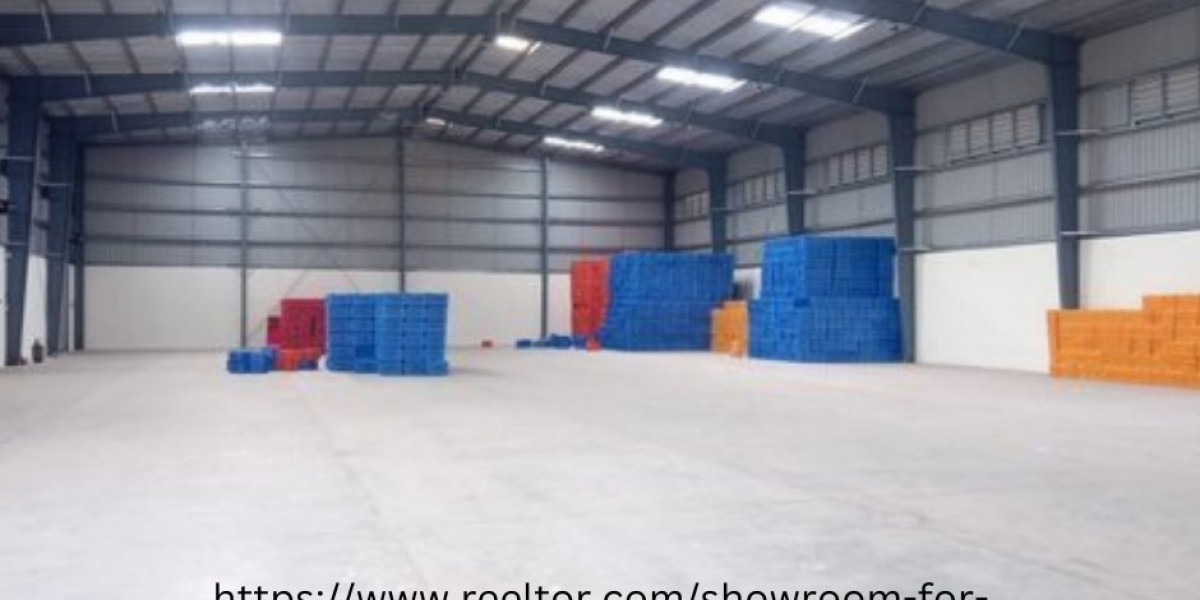Woodworking is an art that brings beauty to our lives, but it also comes with its fair share of dust and debris. As you master the craft, one crucial piece of equipment stands out: the dust extractor. Not only does it keep your workspace clean, but it also ensures a healthier environment for you. With so many options of woodworking dust extractors for sale on the market, navigating through filtration ratings and motor specifications can feel overwhelming. Fear not! We’re here to break down what these terms mean and how they impact your woodworking experience. Whether you're a weekend warrior or a seasoned pro, understanding these details will help you make an informed choice when investing in your next dust extraction system. Let’s dive into the world of woodworking dust extractors together!
Why Dust Extraction Is Crucial in Woodworking Environments
Dust extraction is vital in woodworking environments due to the high volume of fine particles generated during cutting, sanding, and shaping materials. These particles aren’t just a nuisance; they pose significant health risks to anyone working nearby.
Wood dust can lead to respiratory issues over time, including asthma and other chronic conditions. Prolonged exposure increases the chance of developing serious illnesses. A clean workspace not only enhances air quality but also promotes overall well-being for woodworkers.
Moreover, excessive dust accumulation can create fire hazards and may damage tools and machinery. Efficient dust extraction systems minimise these risks by capturing harmful debris at the source, ensuring a safer and more productive environment for all involved in woodworking activities.
Understanding the Health and Safety Risks of Wood Dust
Wood dust is often an overlooked hazard in woodworking environments, yet it carries significant health risks. When fine particles become airborne, they can easily be inhaled. This exposure may lead to respiratory issues such as asthma and chronic bronchitis over time.
In addition to respiratory problems, wood dust is classified as a potential carcinogen by organisations like the International Agency for Research on Cancer (IARC). Long-term exposure can increase the risk of nasal and throat cancers. These risks highlight the importance of proper ventilation and effective dust extraction systems.
Beyond personal health concerns, wood dust can also pose safety hazards. Accumulated dust increases fire risks inside workshops due to its flammable nature. Keeping workspaces clean not only protects your health but also ensures a safer environment for everyone involved in the woodworking process.
What Filtration Ratings Indicate About Air Quality Protection
Filtration ratings play a crucial role in ensuring clean air in woodworking environments. These ratings indicate how effectively a dust extractor can capture and retain harmful particles. The higher the filtration rating, the better it is at trapping fine dust and allergens.
Common metrics include MERV (Minimum Efficiency Reporting Value) and HEPA (High-Efficiency Particulate Air). A HEPA filter, for instance, can trap 99.97% of particles as small as 0.3 microns. This level of filtration significantly improves air quality by reducing airborne contaminants that could affect health.
When shopping for woodworking dust extractors, pay close attention to these ratings. Choosing a model with superior filtration ensures not only cleaner workspaces but also safer breathing conditions during your projects. A good filter system acts as an essential barrier against toxic wood dust exposure.
Comparing HEPA and Standard Filter Types in Extractors
When searching for woodworking dust-extractors for sale, understanding filter types is essential. HEPA filters are renowned for their ability to capture 99.97% of particles down to 0.3 microns in size, making them the gold standard in air quality protection. This high efficiency is critical for woodworkers who want to safeguard their health and maintain a clean workspace.
In contrast, standard filters often lack this level of filtration. While they may effectively handle larger debris and shavings, they can allow fine dust particles to escape back into the atmosphere. This not only compromises air quality but also increases the risk of respiratory issues over time.
Choosing between HEPA and standard filters largely depends on your specific needs as a woodworker. If you're working with materials that produce harmful fine dust or if you prioritise air purity, investing in an extractor equipped with a HEPA filter may be your best option.
How Micron Ratings Affect Dust Collection Efficiency
Micron ratings play a crucial role in determining the effectiveness of a dust extractor in capturing particles. A micron is one-millionth of a meter, and the smaller the rating, the finer the dust that can be collected. For instance, most wood dust particles range between 10 and 100 microns. If your extractor has a lower micron rating, it’s better equipped to handle these common contaminants.
When selecting woodworking dust-extractors for sale, pay attention to their filtration specifications. Extractors with higher efficiency filters (like HEPA) can trap at least 99.97% of particles as small as 0.3 microns. This means cleaner air and reduced health risks associated with inhaling fine wood dust.
Additionally, choosing an extractor with appropriate micron ratings helps maintain your workspace's overall cleanliness. It minimises debris accumulation on tools and surfaces while ensuring optimal airflow efficiency during operations.
The Importance of Motor Power in Dust Extraction Performance
Motor power plays a crucial role in the performance of woodworking dust extractors. A robust motor ensures that the extractor can handle heavy loads and maintain suction even when multiple tools are in use. This is essential for achieving effective dust collection, especially in larger workshops.
Higher wattage typically translates to better airflow and suction capacity, which means more efficient removal of wood particles from your workspace. Without sufficient power, fine dust can escape into the air, compromising both cleanliness and air quality.
When choosing a dust extractor for sale, consider not just the motor's horsepower but also its impact on filtration capabilities. An ideal balance between motor strength and filter efficiency maximises overall performance. Remember that investing in a powerful unit today will pay off with cleaner air tomorrow.
Choosing the Right woodworking dust extractors for sale
Choosing the right woodworking dust extractors for sale can make a significant difference in your workshop. Start by assessing your specific needs, including the type of projects you undertake and the size of your workspace. A compact model might work well for hobbyists with limited space, while larger setups may require more powerful systems.
Consider filtration ratings as part of your decision-making process. High-efficiency filters trap fine particles that standard models might miss. If you're working on detailed woodwork or using materials like MDF, investing in a quality extractor with superior filtration is wise.
Motor power plays an essential role, too. Higher wattage often translates to better suction capabilities, which means improved dust collection efficiency during operations. Evaluate these elements carefully to ensure you select an extractor that meets both safety standards and performance expectations.
Evaluating Airflow Ratings and Suction Capacity
Airflow ratings and suction capacity are critical factors when selecting woodworking dust extractors. High airflow indicates the volume of air that can be moved through the extractor, which directly affects its ability to capture fine dust particles. Look for models that provide clear specifications on cubic feet per minute (CFM).
Suction capacity, often measured in inches of water lift, reflects how effectively the extractor can pull dust from your workspace. A powerful motor coupled with high suction capability ensures efficient cleanup during and after projects.
Keep in mind that a balance between airflow and suction is essential. An extractor may boast impressive CFM but fall short if it lacks adequate lift to draw materials from your tools or work surfaces efficiently. Consider both metrics carefully based on your specific woodworking needs for optimal results.
Single-Stage vs. Two-Stage Dust Extractors
Single-stage dust extractors are simpler in design, making them an attractive option for hobbyists and small workshops. They utilise a single collection canister to capture debris. This means they are generally more affordable and easier to set up. However, the trade-off is often less efficient separation of finer dust particles.
On the other hand, two-stage dust extractors excel at separating larger chips from fine dust through a cyclone action before reaching the filter. This results in better filtration efficiency and prevents clogs in the system. The initial investment might be higher, but their performance can lead to lower maintenance costs over time.
Choosing between these options depends largely on your specific woodworking needs. If you work with materials that produce significant amounts of both large shavings and fine particulate matter, investing in a two-stage extractor could provide long-term benefits for air quality and equipment longevity.
Key Factors That Influence Longevity and Maintenance
The longevity of woodworking dust extractors hinges on several key factors. Regular maintenance is essential; this includes cleaning or replacing filters and emptying collection bags frequently. Neglecting these tasks can lead to reduced performance and even motor burnout.
Another important aspect is the quality of materials used in construction. Extractors made from durable components tend to withstand wear and tear better than their cheaper counterparts. Investing in a well-built machine often pays off in the long run through fewer repairs.
Proper usage also influences lifespan. Overloading the extractor with heavy debris or using it for non-woodworking tasks can cause unnecessary strain on the motor and internal parts. Always follow manufacturer guidelines for optimal operation, ensuring that your equipment remains efficient for years to come.
Conclusion
Investing in the right woodworking dust extractors for sale can significantly enhance your workspace. With various models available, understanding filtration ratings and motor specifications is essential. These factors directly impact not just performance but also your health. Choosing wisely ensures a cleaner environment, reducing potential hazards associated with wood dust exposure. Whether you prefer HEPA filters or standard options, each has its unique benefits tailored to different needs. By assessing airflow ratings and considering single-stage versus two-stage systems, you tailor your choice to fit specific projects and requirements. Prioritising quality will lead to years of effective use while maintaining safety standards in your workshop.
FAQs
1. What is the difference between HEPA filters and standard filters?
HEPA filters capture 99.97% of particles down to 0.3 microns, making them ideal for fine dust, while standard filters may miss smaller particulates.
2. How do I know what motor power I need for my workshop?
The required motor power depends on the size of your shop and the tools you use. Larger spaces or more demanding machinery require stronger motors for optimal performance.
3. Are single-stage extractors effective enough for serious woodworking projects?
Single-stage extractors work well for many applications but may struggle with finer dust types compared to two-stage models, which offer better separation and efficiency.
4. How often should I replace the filter in woodworking dust extractors for sale?
Filters of woodworking dust extractors for sale should be checked regularly; replacing them every six months or when they show signs of clogging will keep airflow strong and maintain air quality.
5. What maintenance does a dust extractor typically require?
Regular cleaning of the filter, checking hoses for blockages, and ensuring moving parts are lubricated will prolong the life of your machine significantly.
Related Business Listings |













